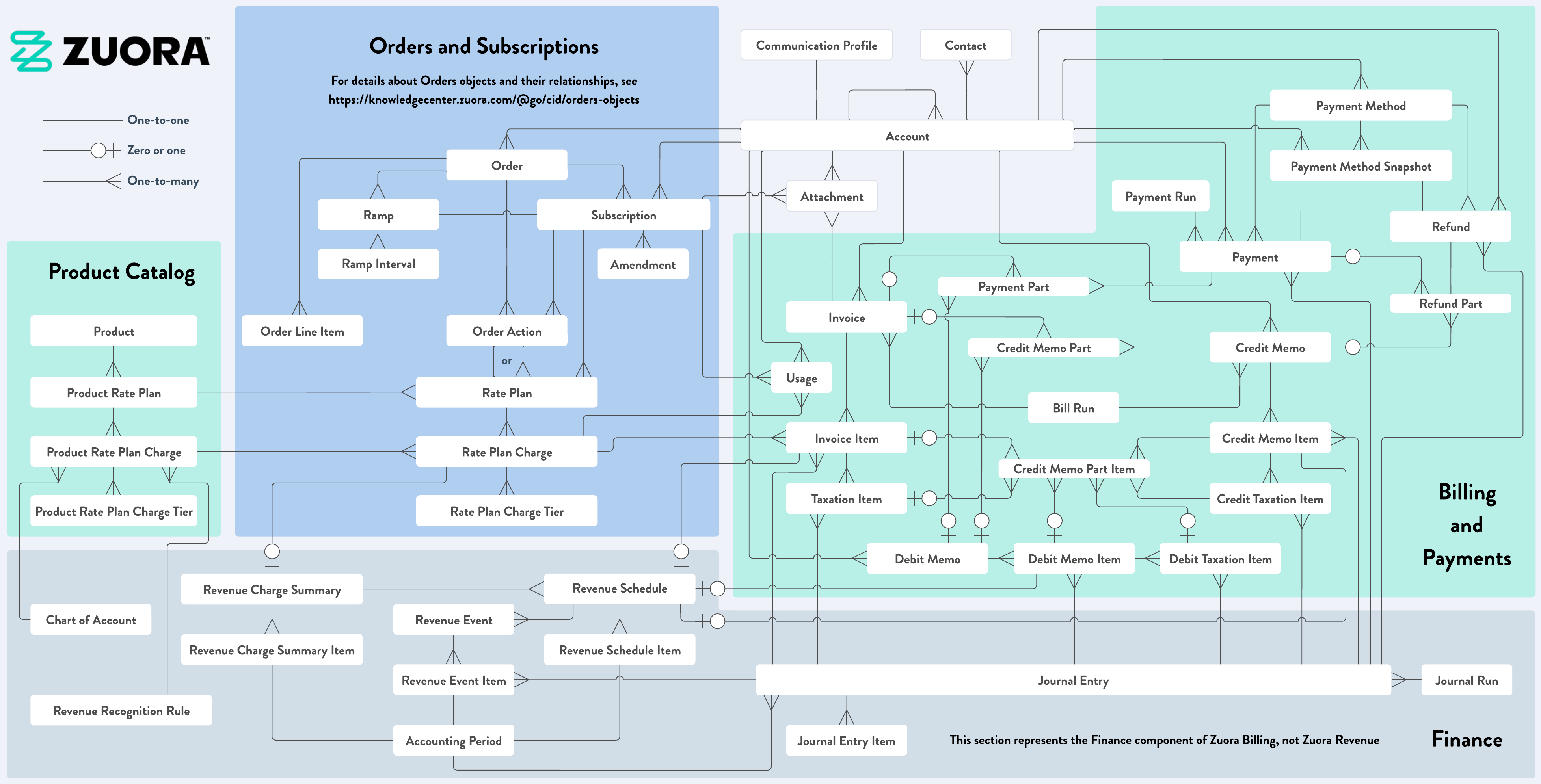Zuora object model
The following diagram is a high-level view of how key business objects are related to one another within Zuora Billing and Payments.
Click the diagram to open it in a new tab and zoom in. For more information about the different sections, see Zuora business object model.
This diagram is intended to provide a conceptual understanding; it does not illustrate a specific way to integrate with Zuora.
The diagram includes the Orders feature and the Invoice Settlement feature.
For more information about the Orders objects, see Orders object model.
For more information about the Invoice Settlement objects, see Invoice Settlement object model.
If your organization does not use either of these features, see Zuora Billing business object model prior to Orders and Invoice Settlement for an alternative diagram.
